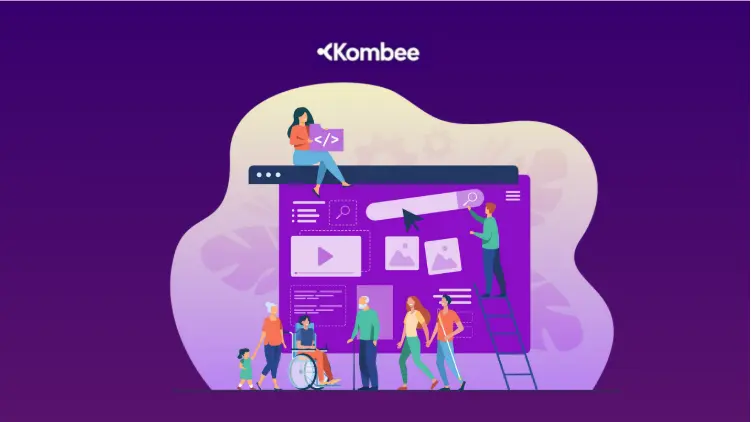We explore how the quality of user experience on your website directly affects the ability to keep customers coming back. A site that works confusing, slow, or unfriendly breeds frustration and churn.
Why Excellent Website UX Matters for Customer Retention
Customer retention is not just about pricing or promotions. It is deeply tied to how users perceive your brand during interactions. When navigation is unintuitive or pages load sluggishly, users feel annoyed. They abandons, they never return. On the flipside, a site that feels reliable, clear, and fast fosters trust and loyalty.
Speed and Performance Effects
Page load times under 2 seconds reduce bounce rates significantly. According to Google PageSpeed Insights reports, slow load undermines retention. Users expect immediacy. If your site lags they will leave. That connection between performance and retention is backed by industry research like A/B testing case studies.
Navigation Clarity and Information Architecture
Users should find what they need within a few clicks. A clear menu, logical grouping, consistent labels matter. Studies at Nielsen Norman Group show that poorly structured navigation doubles task completion time. When findability suffers, retention drops.
Emotional Connection Through UX Design Choices
When customers feels seen, when design communicates empathy, retention goes up. Color choices, micro‑interactions, copy tone align with user expectations. That emotional resonance drives users to keep returning.
Micro‑interactions and Feedback Loops
When user takes action, immediate visual or auditory feedback makes them feel confident. Things like animated buttons, real‑time validation, hover states build trust. Those subtle UX elements reduce friction and keep users engaged.
Trust Signals and Credibility Indicators
Including elements like customer reviews, badges, clear policies builds reassurance. A study by Baymard Institute shows that trust elements reduce cart abandonment. That in turn raises customer loyalty.
Measuring UX Impact on Retention
We need track metrics beyond vanity numbers. Retention rate, repeat session frequency, time‑on‑site and task completion rates reveal how UX influences user behavior.
Retention Rate and Churn Analysis
Retention rate = (customers at end of period minus new customers)/customers at start. Watching how that changes after design modifications shows UX impact. Tools like Mixpanel analytics let you segment cohorts by entry path, device, or page. If retention improves among users from specific flows, it’s a UX wins.
Session Duration and Engagement Depth
Longer sessions often suggest users engaged meaningfully. But too long can mean confusion. You need pair time‑on‑site with pages per session and task success. Google Analytics and tools like Heap analytics help reveal where users struggle.
Strategies to Enhance UX for Sustained Customer Retention
By intentionally designing for real user needs, retention rises steadily over time. We outline actionable improvements below.
Mobile Optimization and Responsive Design
Majority of traffic now from mobile devices. If experiences on smartphone is clunky or buttons too small retention plummets. Use responsive layouts, optimize touch targets, test across devices. Frameworks like Bootstrap or Foundation support mobile‑friendly design.
Accessibility and Inclusive Design
Ensuring site WCAG compliance helps users with disabilities and improves overall usability. Screen reader compatibility, color contrast, keyboard navigation all matter. Accessible experiences often improve retention across every audience segment.
Consistent Visual Language and UI Patterns
Consistency reduces cognitive load. When buttons, colors, spacing follow patterns users anticipate, they complete tasks faster. That sense of familiarity encourages return visits.
we also at times work with a web development company in new york to build digital platforms that feel human. Choosing the right agency ensures design and development align precisely with retention goals.
A/B Testing UX Changes to Validate Impact
Split testing variations of layouts, copy, or flow reveals what resonates best. Tools like VWO or Optimizely let you test for retention uplift. Run tests targeting specific micro‑interactions: signup flows, checkout steps, onboarding tutorials.
Form Field Optimization
Forms with too many fields deter users. Reducing fields, using progressive disclosure, adding inline labels, or auto‑fill improves submission rates. That in turn fosters repeat usage especially for subscription or account‑based services.
Personalization Based on Behavior
When returning users see content tailored to their past behavior, retention improves. Recommendations, saved preferences, or previously viewed items create feeling of continuity. That emotional continuity matters.
Common UX Pitfalls That Cause Customer Churn
Identifying areas where UX fails can help you reduce churn before it becomes major issue.
Hidden Costs and Surprise Charges
Users abandons carts when shipping or tax appears late in checkout. Be transparent early. UX that reveals full cost at the start builds trust and avoids frustration.
Pop‑Ups and Intrusive Interstitials
While conversion-focused, pop‑ups interrupt flow and annoy users when overused. Poor UX here often backfires and increase bounce rates. Use exit‑intent triggers sparingly and ensure easy dismissal.
Inconsistent Performance Across Devices or Browsers
If the site works fine in Chrome desktop but crashes on Safari mobile, users will remember that. Test broadly. Retention suffers when experiences unpredictable.
Case Study: UX Revision and Retention Gains
A retail site reduced checkout steps from five to three, improved page load by optimizing images, and clarified navigation labels. Repeat purchase rate rose 15% over three months. That uplift attributed entirely to UX changes.
Continuous Improvement through Feedback
Collect user feedback via surveys, session recordings, or heatmaps. Tools like Hotjar or Usabilla reveal where users hesitate or drop off, guiding iterative refinement.
Iterate and Monitor Periodically
UX is never “finished.” Regularly loop in analytics, feedback and re‑test hypotheses. When you see dips in retention, review UX changes, gather new data, and adjust accordingly.
Conclusion: UX as a Retention Engine
Customer retention rests on the foundation of user experience. From performance and navigation to emotional resonance and accessibility, every detail influences whether a user returns. By measuring the right metrics, testing improvements, and designing with empathy, businesses maintain loyal audiences over time.
Neglect UX and retention suffers. Prioritize clear structure, quick loads, human‑centered interfaces, and trust signals. We encourage continuous learning from users, thorough testing, and thoughtful design to reinforce the link between website UX and long‑term customer loyalty.
